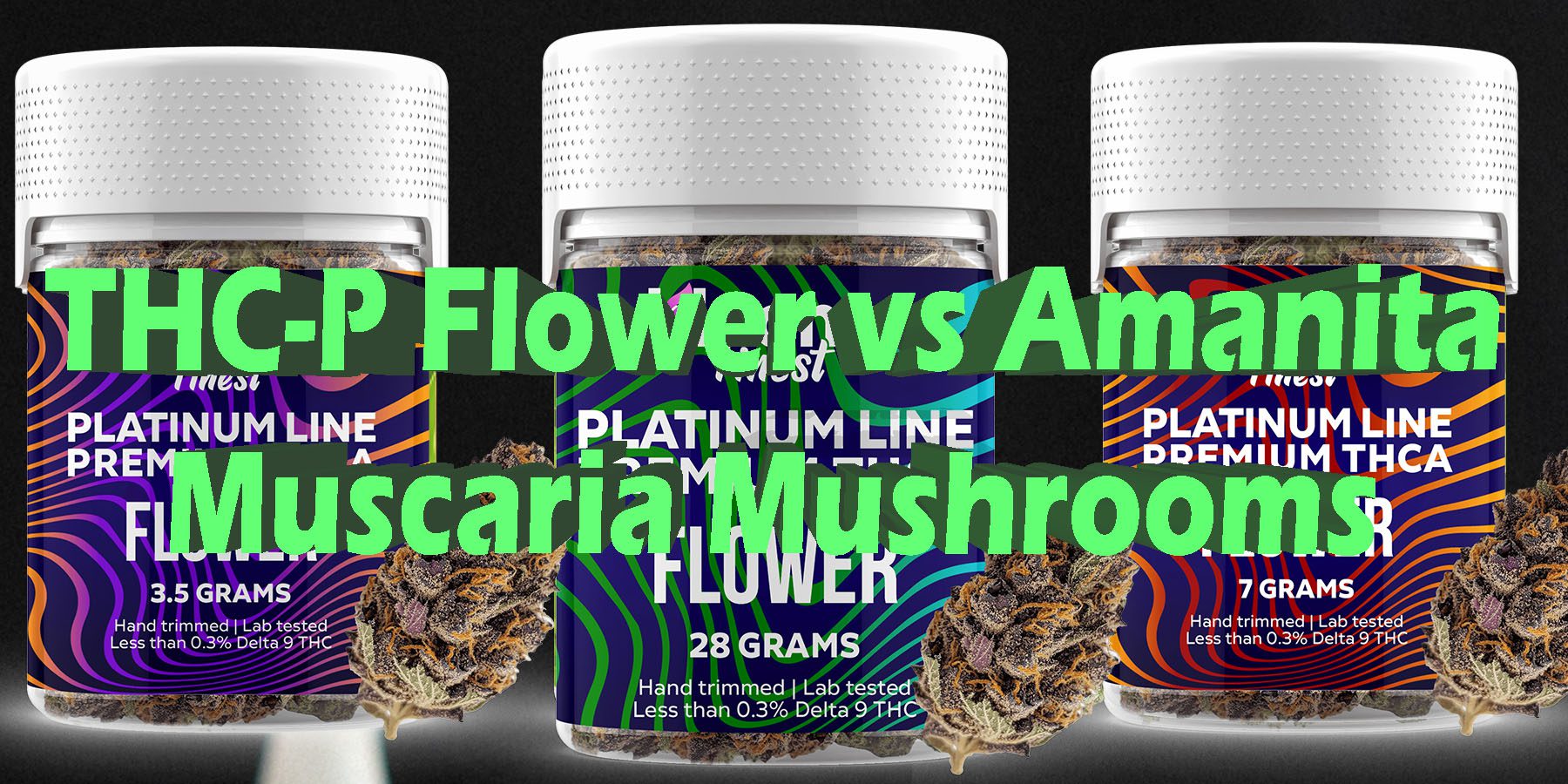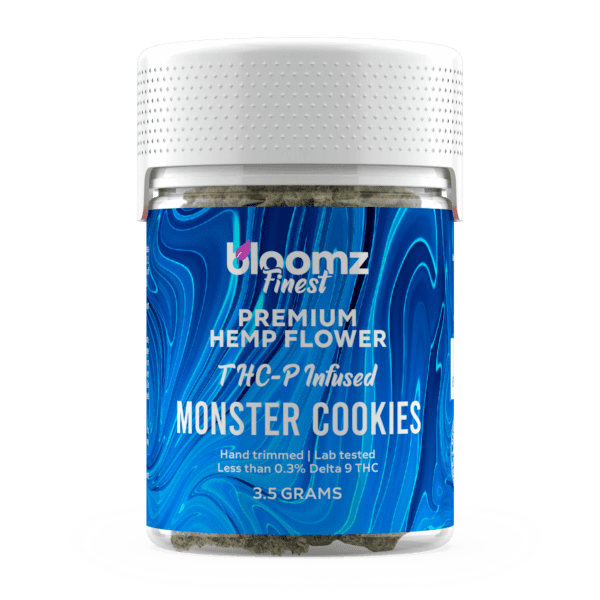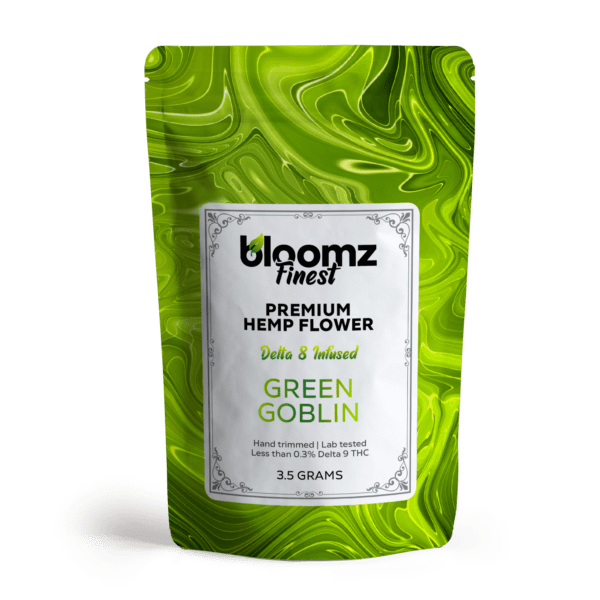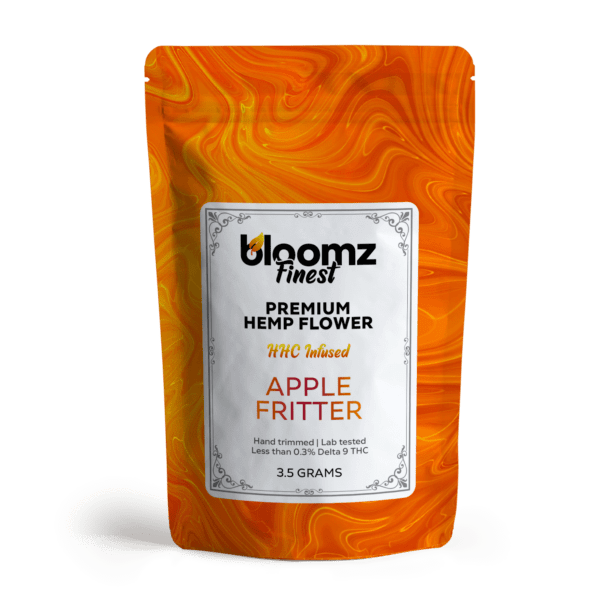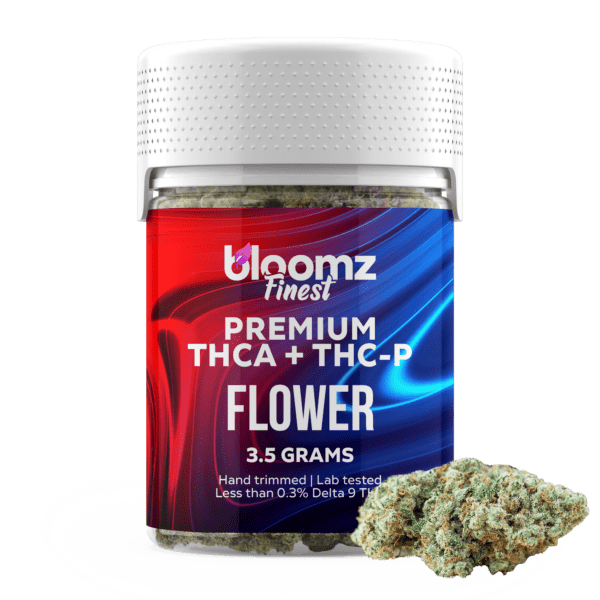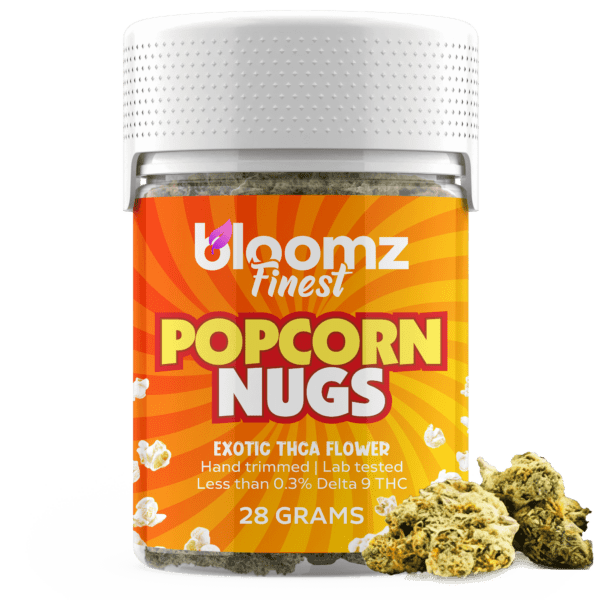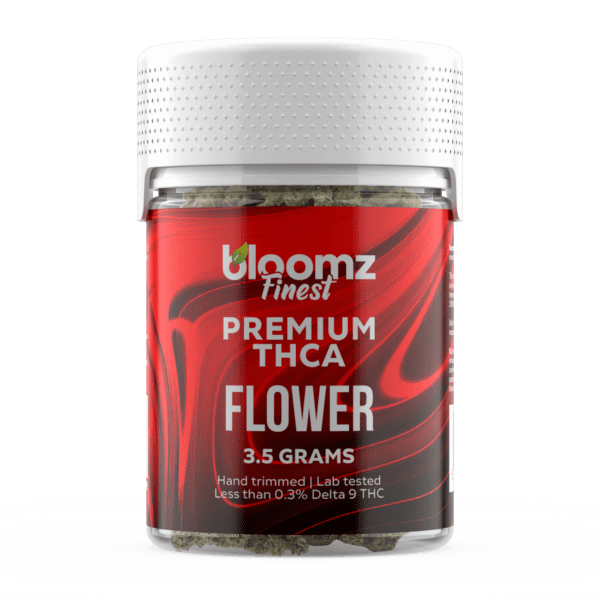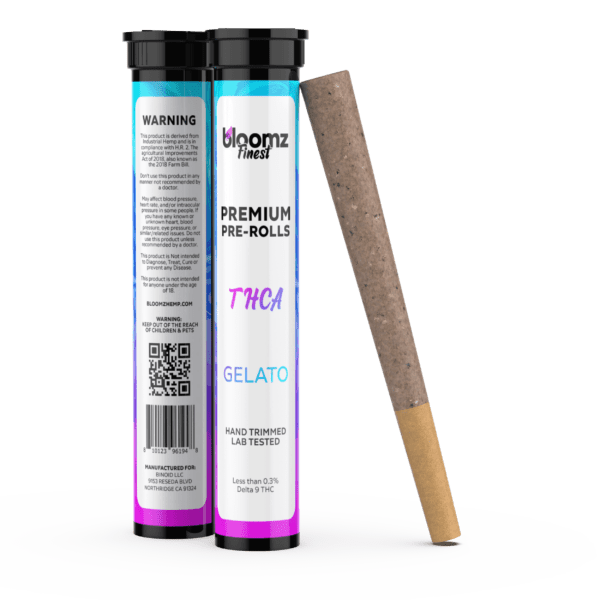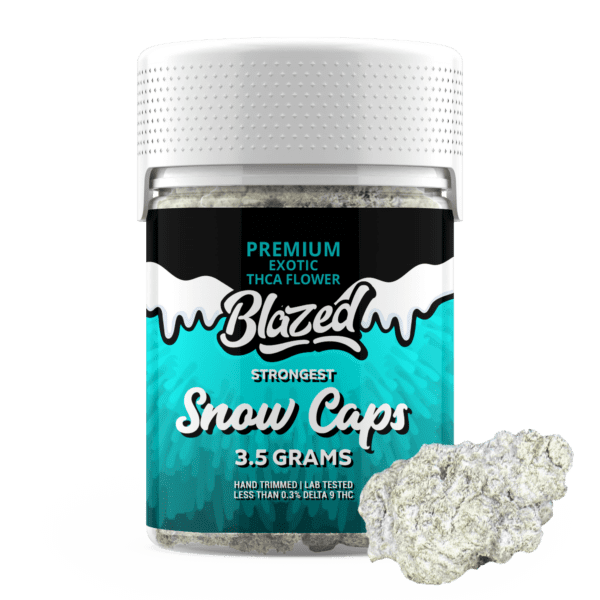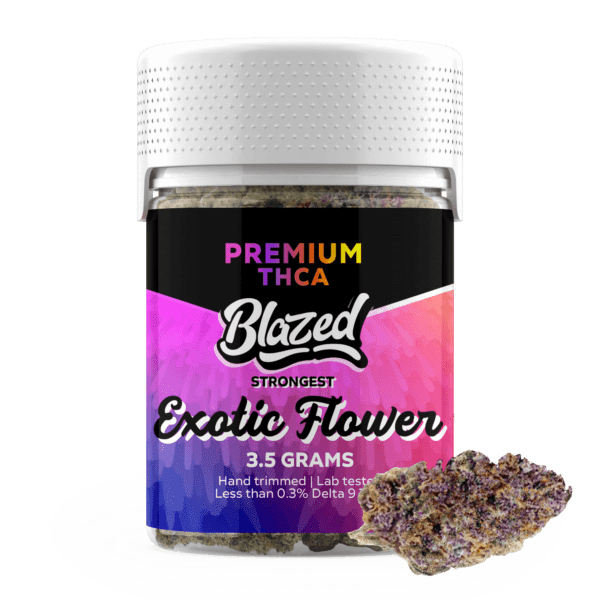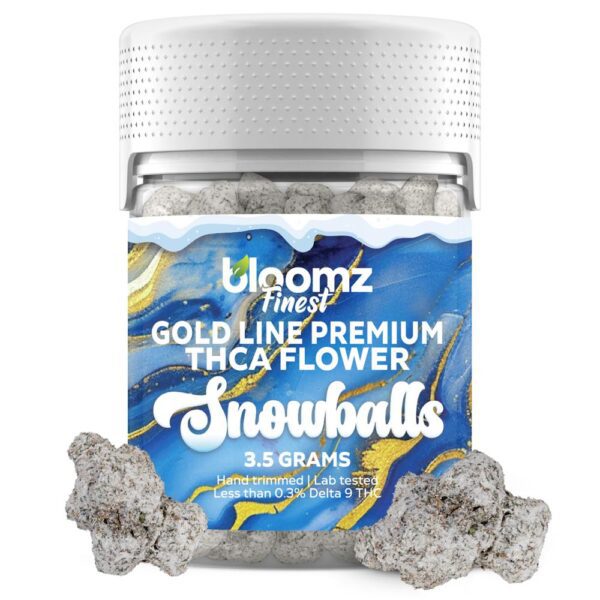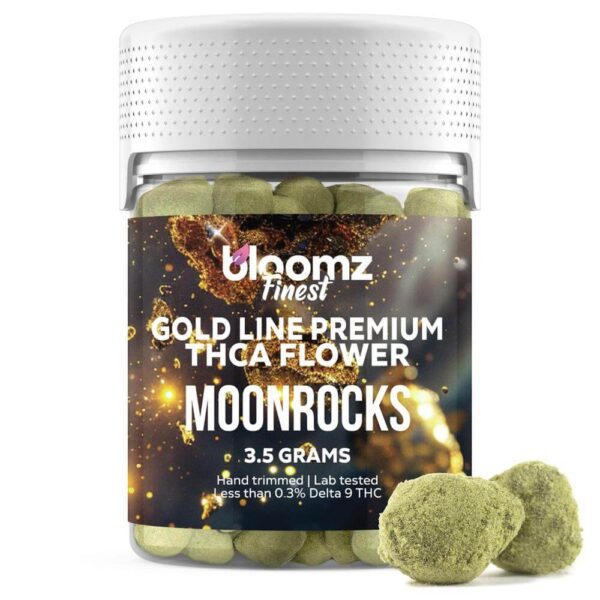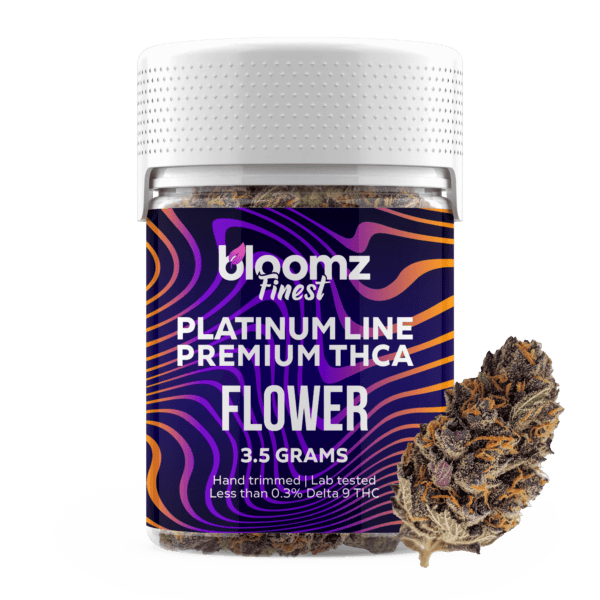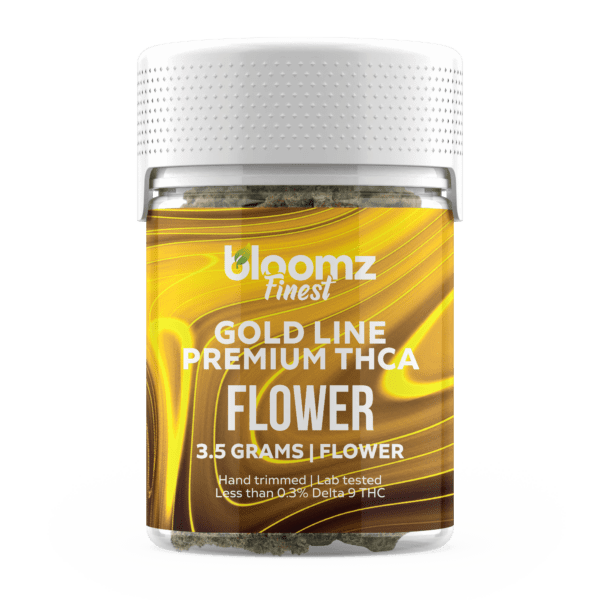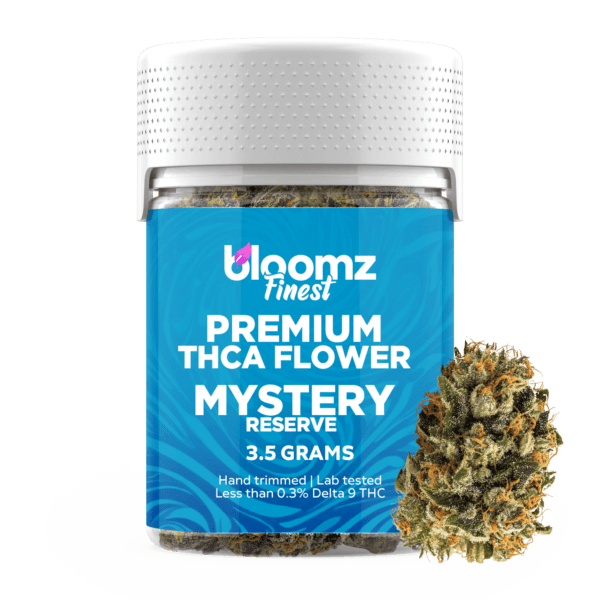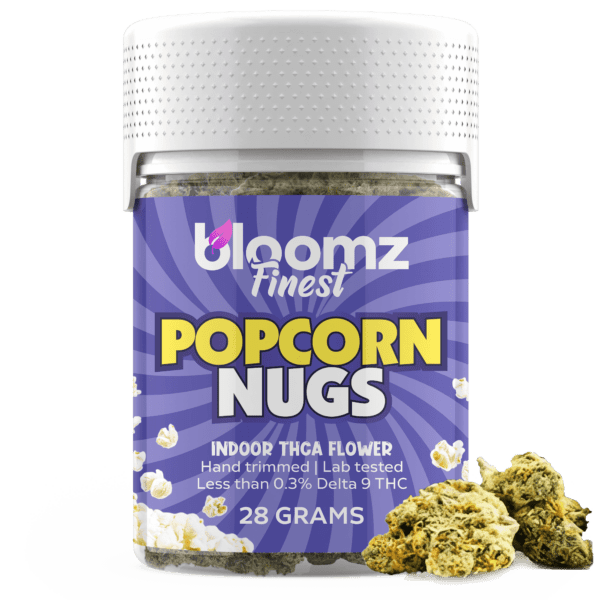In the ever-expanding universe of natural and scientifically enhanced substances, there exist certain compounds that command a unique level of respect, sitting at the far edges of the experiential spectrum. These are not the gentle allies for the casually curious; they are the titans; the potent forces sought out by seasoned explorers of consciousness for their profound and powerful effects. Today’s exploration brings two such titans into the ring, each hailing from a completely different kingdom of life and offering a journey of incredible intensity.
In one corner, we have THC-P flower, a marvel of modern cannabinoid science, representing the absolute pinnacle of hemp-derived potency and promising a journey of overwhelming euphoria. In the other corner stands the ancient and enigmatic Amanita Muscaria mushroom, a fungus woven into the very fabric of folklore and shamanism, which offers a key to a bizarre, dissociative, and dream-like reality. This is not a matchup for the faint of heart; it is a deep dive into two distinct forms of profound alteration, pitting the apex of botanical science against the mystique of ancient fungal magic.
TO BUY THC-P FLOWER CLICK HERE
Recommended products
Why It’s Important to Breakdown the Matchup of THC-P Flower vs. Amanita Muscaria Mushrooms
In a market saturated with options, clarity and precision are paramount, especially when the substances in question are known for their significant and powerful effects. The comparison between THC-P flower and Amanita Muscaria mushrooms is a particularly crucial exercise because it deals with two products that, while vastly different, both appeal to a user base seeking experiences that go far beyond the mild or moderate. A detailed breakdown is essential to illuminate the profound chasm that separates their origins, their mechanisms of action, and the very architecture of the conscious states they induce. This is not just about choosing a product; it’s about understanding the nature of the profound journey one is considering, and also approaching it with the necessary knowledge and respect to ensure a safe and intentional experience.
The most critical reason for this detailed analysis lies in the fundamental nature of their intensity. Both THC-P and Amanita Muscaria are considered extremely potent, but their potency manifests in completely different ways. THC-P flower delivers an experience that is an exponentially stronger version of the familiar cannabis high, characterized by intense euphoria and sensory alteration. Amanita Muscaria, on the other hand, produces a powerful dissociative state, a journey into a dream-like reality that is often sedative and looped. Mistaking the intense, euphoric rush of a powerful cannabinoid for the deep, introspective, and often bizarre trance of a GABA-ergic fungus could lead to a jarring and deeply uncomfortable experience. Understanding that they represent two different kinds of “strong” is the first step toward responsible exploration.
Furthermore, their safety profiles and legal standings, while both complex, stem from entirely different concerns. THC-P flower is a manufactured product, with safety considerations centering on the purity of the lab-synthesized cannabinoid and the quality of its application to hemp flower. Its legality is a contentious gray area derived from the 2018 Farm Bill. Amanita Muscaria is a natural fungus, with its primary safety concern being the proper preparation needed to convert the neurotoxic ibotenic acid into the desired muscimol. Its legality is more straightforward at the federal level but still requires an understanding of its unique pharmacology. This breakdown helps users navigate these very different sets of risks—one based on industrial production and legal ambiguity, the other on natural toxicology and preparation.
Finally, this comparison highlights two distinct philosophies of seeking intense experiences. The pursuit of THC-P is often driven by a desire to explore the upper limits of cannabinoid-induced euphoria and sensory pleasure, a quantitative enhancement of a known type of experience. The path of Amanita Muscaria is typically one of seeking a qualitatively different state of being, a journey into ancient mystery and the subconscious mind that is less about pleasure and more about exploration and novelty. By placing these two powerful contenders side-by-side, we can fully appreciate their unique characters and empower discerning individuals to make a choice that is truly aligned with their experience level, their intentions, and their readiness for a profound journey.
Contender #1: THC-P Flower
In the rapidly advancing frontier of hemp-derived cannabinoids, THC-P flower has emerged as a true titan, a product that pushes the very boundaries of potency and has captured the attention of the most seasoned cannabis enthusiasts. It represents the cutting edge of cannabinoid science, a testament to what is possible when natural botanical forms are enhanced with exceptionally powerful, lab-refined compounds. To the eye, THC-P flower is indistinguishable from the highest-grade cannabis, boasting dense, trichome-covered buds and pungent, complex aromas.
However, its unassuming appearance belies an inner power that far surpasses that of its more common cannabinoid cousins. THC-P flower is not a plant that grows naturally; it is a carefully constructed product designed for an experience of unparalleled intensity, offering a journey into profound euphoria that is reserved for the most experienced and tolerant of users. Its existence is a direct consequence of both a landmark scientific discovery and the ongoing innovation within the legal hemp market.
The incredible power of this product is derived from a single, remarkable molecule: Tetrahydrocannabiphorol (THC-P), which was only recently identified in 2019 by a team of Italian researchers who were analyzing a particular cannabis strain. What they discovered was a naturally occurring analogue of THC that possessed a significantly different molecular structure. The key difference, and the source of its immense strength, lies in its alkyl side chain. While standard Delta 9 THC has an alkyl side chain with five carbon atoms, THC-P boasts a longer chain with seven carbon atoms.
This elongated structure dramatically increases its ability to bind with the CB1 receptors in the human brain—the primary receptors responsible for producing the psychoactive effects of cannabis. According to the initial research, THC-P exhibits a binding affinity for the CB1 receptor that is over 30x stronger than that of Delta 9 THC. This incredible affinity is the scientific explanation for its reputation as the most potent naturally-occurring phytocannabinoid discovered to date.
Recommended products
The creation of THC-P flower is a testament to the sophisticated manufacturing processes developed within the modern hemp industry. It is essential to understand that, like Delta 8 flower, THC-P flower is not a naturally grown product. Because THC-P exists in such minuscule concentrations in the actual cannabis plant, it isn’t feasible to extract it directly. Instead, the potent THC-P distillate used to create these products is synthesized in a laboratory, and then carefully applied to a base of high-quality hemp flower. The precision required in this process is paramount, as even a small miscalculation with such a potent compound could lead to an overwhelmingly intense product:
Sourcing Premium Hemp Flower: The process begins with the cultivation of top-tier, federally compliant hemp flower. This base flower, typically rich in CBD or CBG, is chosen for its excellent bud structure, vibrant terpene profile, and overall quality. The natural aromas and flavors of this premium hemp serve as the foundational canvas for the experience.
Laboratory Synthesis of THC-P: In a highly controlled laboratory setting, expert chemists use a starting material of legal hemp-derived CBD isolate. Through a complex, multi-step chemical process known as isomerization, the molecular structure of the CBD is rearranged to create the THC-P molecule. This is a highly specialized process that requires advanced equipment and expertise to ensure the final distillate is pure and free of unwanted byproducts.
Precision Infusion and Blending: This is the most critical manufacturing step. Due to the extreme potency of THC-P, it is rarely, if ever, applied to flower in its pure form. Instead, the THC-P distillate is typically blended with a less potent cannabinoid, such as Delta 8 THC, to create a more balanced and manageable, yet still incredibly powerful, final product. This carefully calculated blend is then applied to the hemp flower using methods like solventless cryo-infusion or light spraying to ensure a consistent and even coating.
Rigorous Third-Party Lab Testing: For a product this potent, independent verification is non-negotiable for any reputable brand. A sample of the final, infused THC-P flower is sent to an accredited third-party laboratory. The lab performs comprehensive tests to verify the exact potency of THC-P and other cannabinoids, and, just as importantly, to screen for any residual solvents, heavy metals, or other contaminants, ensuring the product is both accurately labeled and safe for consumption.
The market for THC-P flower, while more niche than that of other cannabinoids, offers several categories of products tailored to the experienced user. The primary distinctions between these products lie in the quality of the base hemp flower and the specific formulation of the cannabinoid blend used in the infusion. Given the extreme potency of THC-P, every product in this category should be approached with the utmost caution and respect, as they are all designed to deliver a profoundly powerful experience:
Indoor THC-P Flower: This represents the highest tier of THC-P flower products. It utilizes premium, indoor-grown hemp flower as its base, which provides a dense, visually perfect, and terpene-rich foundation. When infused with the potent THC-P distillate blend, the result is a connoisseur-grade product that offers a symphony of complex aromas and flavors alongside an incredibly intense psychoactive experience.
Outdoor THC-P Flower: For a more budget-conscious option, some brands may use sun-grown, outdoor hemp flower. While the buds might be less aesthetically perfect than their indoor counterparts, they can still serve as an effective carrier for the THC-P distillate. This option provides access to the powerful effects of THC-P at a more accessible price point for experienced users.
THC-P Nugs: This is the general term for the standard, trimmed buds of hemp flower that have been infused with THC-P. These are the most common form of the product, sold by weight in jars or bags. Regardless of the quality of the base flower, any THC-P nug is an exceptionally potent item that requires extremely cautious dosing.
THC-P Moonrocks: Representing the absolute apex of smokable potency in the hemp market, THC-P Moonrocks are an “experts only” product. They are created by taking a high-quality hemp nug, coating it in a sticky layer of a potent distillate blend containing THC-P, and then rolling the entire concoction in a thick layer of CBD or CBG kief. The resulting product is incredibly dense, heavy, and delivers an overwhelmingly powerful experience.
THC-P Pre-Rolls, Blunts & Joints: For convenience, some brands offer pre-rolled versions of their THC-P flower. These provide a ready-to-use option, but they also carry a significant risk for inexperienced users. A single standard-sized joint of this material is far too much for one person in one sitting. Responsible consumption of a THC-P pre-roll involves taking a single, small puff and waiting at least 20-30 minutes to assess the effects.
The use of familiar strain names on THC-P flower products follows the same logic as it does for Delta 8 flower, but the implications are amplified by the cannabinoid’s sheer strength. The strain name—be it an Indica, Sativa, or Hybrid—refers to the genetic profile of the base hemp flower used in the product. The terpenes of this base strain will absolutely influence and “steer” the direction of the experience, but the overwhelming character of the journey will be dictated by the profound potency of the THC-P itself. Think of the base strain as the specific landscape you are traveling through, while the THC-P is the high-speed vehicle propelling you through it at an incredible velocity:
Indica: When an Indica-dominant hemp strain with a relaxing terpene profile is infused with THC-P, the resulting experience is likely to be one of profound, full-body immersion and deep physical relaxation, coupled with an intensely euphoric and introspective mental state. The calming nature of the Indica terpenes may help to ground the overwhelming power of the THC-P, making it a choice for experienced users seeking a powerful, meditative, and couch-locking evening session.
Sativa: Using a Sativa-dominant hemp strain with an uplifting and energizing terpene profile as the base for THC-P flower creates an experience that can be incredibly expansive and cerebral. The stimulating terpenes might direct the intense psychoactivity towards creative thought, profound philosophical musings, and a powerful rush of euphoric energy. This combination is for the most adventurous of users and can be intensely stimulating and mentally active.
Hybrid: Hybrid strains offer a balanced foundation, and when infused with THC-P, they can produce a multifaceted experience of immense power. The effects can encompass both the heavy, blissful body sensations of an Indica and the racing, creative cerebral activity of a Sativa, all amplified to an extraordinary degree by the THC-P. This creates a complex and all-encompassing high that engages both mind and body with incredible force.
The legality of THC-P flower in the United States exists in the same complex and highly contentious gray area as Delta 8 THC, but arguably under even greater scrutiny due to its immense potency. The legal argument for THC-P is that, as a cannabinoid synthesized from hemp-derived CBD, it falls under the protection of the 2018 Farm Bill, which legalized hemp and all its derivatives so long as they contain less than 0.3% Delta 9 THC. However, this position is fragile.
The DEA’s stance on “synthetically derived tetrahydrocannabinols,” combined with the undeniable and powerful psychoactive nature of THC-P, makes it a prime target for regulatory action. Many of the state-level laws that have been passed to ban or restrict Delta 8 THC often use broad language that would also cover other intoxicating, hemp-derived cannabinoids like THC-P. Therefore, consumers must be extremely diligent in checking their local state laws, as this product is illegal in many jurisdictions and exists in a precarious legal position in others.
The purposes for using THC-P flower are centered exclusively on achieving an experience of profound psychoactive intensity. The methods of consumption are standard for cannabis flower, but the approach to dosing must be radically different. The number one rule for consuming THC-P flower is to start with the smallest possible amount and wait for an extended period before considering more. The potency is so high that a standard dose of regular cannabis flower would be an overwhelming and likely unpleasant experience with THC-P. Respect and extreme caution are not just recommended; they are absolutely essential for a positive and safe experience:
Vaping (using a portable or desktop vaporizer): Vaping is an excellent method for THC-P flower as it allows for some degree of temperature control and provides a cleaner inhalation. Crucially, a user should only pack a minuscule amount into their vaporizer—a tiny fraction of a normal bowl—and take a single, small inhalation before waiting at least 20-30 minutes to gauge the full effect.
Smoking: While a classic method, smoking THC-P flower requires immense discipline. Whether using a pipe, bong, or a pre-roll, the approach is the same: take one very small puff, not a full draw. Inhaling deeply as one would with regular cannabis is a recipe for overconsumption. The rapid onset of smoking is a benefit, but it must be paired with extreme moderation.
Cooking/Baking: Making edibles with THC-P flower is possible but is an advanced practice that requires extreme precision. The potency of the flower makes accurate dosing incredibly difficult without laboratory equipment. A tiny miscalculation could result in an edible that is unpleasantly strong and lasts for many hours. This method should only be attempted by the most experienced and cautious of users.
The overall effects of THC-P flower are best described as a familiar THC experience amplified to an extraordinary degree. Users report that it produces a “high” that’s similar in character to Delta 9 THC but is profoundly more potent, intensely euphoric, and significantly longer-lasting. The onset can be surprisingly slow for an inhaled product, sometimes taking up to 30 minutes to fully reveal its strength, which is a primary reason for the high risk of overconsumption.
Once the effects take hold, they can include a powerful, all-encompassing body high that feels deeply relaxing and blissful, combined with a significant and often overwhelming cerebral experience. This mental aspect can be intensely psychoactive, leading to profound shifts in perception, deep introspection, and a powerful sense of wonder. For those with a high tolerance, it can be a transcendent experience of bliss, but for the unprepared or the low-tolerance user, the sheer intensity can be disorienting and uncomfortable.
Recommended products
Pros & Cons
THC-P flower, as a frontier cannabinoid product, comes with a profile of extreme advantages and equally significant risks. Its entire identity is built on its unparalleled potency, a quality that is either its greatest asset or its most formidable drawback, depending entirely on the user’s experience, tolerance, and intention.
Pros:
Unmatched Potency and Strength: For experienced cannabis users with a very high tolerance, THC-P offers a novel and powerful experience that can transcend the limits of traditional THC. It provides a new level of intensity that many seasoned enthusiasts are seeking.
Profound Feelings of Euphoria: The intense interaction with the CB1 receptors can lead to a powerful and profound sense of euphoria and bliss. Users often report an overwhelming sense of well-being and happiness that is much more pronounced than with other cannabinoids.
Efficiency in Dosing: Because it is so incredibly potent, only a very small amount of material is needed to achieve a significant effect. This means that a small purchase can last a very long time, making it an efficient choice for those who require high doses.
Long-Lasting Experience: The effects of THC-P are reported to last significantly longer than those of Delta 9 THC. This extended duration can be desirable for users who want a prolonged experience without needing to re-dose frequently.
A Novel Cannabinoid Journey: For the connoisseur who has explored a wide range of strains and cannabinoids, THC-P offers something genuinely new and different. It provides a unique journey into the upper echelons of what cannabinoids can do.
Legal Accessibility (in some areas): In states that have not explicitly banned intoxicating hemp derivatives, THC-P flower can be legally purchased. This provides a legal channel to an experience that is far more potent than what is available in many regulated Delta 9 THC markets.
Potential for Deep Introspection: The sheer intensity of the THC-P experience can often lead to a state of deep introspection and contemplative thought. For some users, this can be a powerful tool for self-reflection and creative thinking.
Represents Cutting-Edge Science: The discovery and synthesis of THC-P are at the forefront of cannabinoid research. Engaging with this product is, in a sense, experiencing the very latest developments in the field of cannabis science.
Synergy with Natural Terpenes: THC-P flower combines the raw power of the synthesized cannabinoid with the nuanced aromatic and flavorful profiles of the high-quality hemp flower it is infused into, creating a complex and multi-sensory experience.
Product Variety Available: Despite being a niche product, THC-P is available in several forms, including various infused flower strains, potent moonrocks, and convenient pre-rolls, offering a range of options for the experienced user.
Cons:
Extreme Risk of Overconsumption: This is the most significant con. The immense potency and often delayed onset make it incredibly easy to take too much, which can lead to a highly unpleasant, overwhelming, and uncomfortable experience. THC-P flower is strictly not for beginners or users with a low tolerance.
Precarious and Ambiguous Legal Status: THC-P exists in a volatile legal gray area. It is explicitly illegal in many states, and its federal legality under the Farm Bill is heavily contested. Consumers face significant legal risks depending on their location.
Lack of Scientific Research: As a very recently discovered compound, there is a significant lack of long-term research on the health and safety effects of THC-P. Users are engaging with a powerful substance whose full pharmacological profile is not yet well understood.
Unregulated Market and Safety Concerns: The market for THC-P is largely unregulated, leading to a high variance in product quality. There are risks of inaccurate potency labeling and the presence of harmful residual solvents from the synthesis process, making third-party lab reports absolutely essential.

Contender #2: Amanita Muscaria Mushrooms
Stepping out from the deep, shaded woods of history and folklore into the bright lights of the modern alternative market, the Amanita Muscaria mushroom is a truly enigmatic contender. With its iconic brilliant red cap speckled with white warts, it is perhaps the most recognizable toadstool on the planet, the quintessential image of a mushroom from fairy tales, folklore, and video games. Yet, for all its visual familiarity, its true nature is widely misunderstood. It is not a “magic mushroom” in the conventional sense and holds a chemical key to a vastly different door of perception than its psilocybin-containing cousins.
The recent surge in its availability in processed forms like gummies and vapes represents a fascinating cultural moment, where an ancient shamanic tool is being repackaged for a new audience. Understanding Amanita Muscaria requires setting aside preconceived notions about psychedelic fungi and delving into its unique chemistry, its rich and mysterious history, and the dream-like, dissociative state it can produce. It is a journey into a different kind of consciousness, one that has been both feared and revered for centuries.
The most crucial fact to gain knowledge on Amanita Muscaria mushrooms is what they are not: they do not contain psilocybin or psilocin, the psychoactive compounds found in mushrooms of the Psilocybe genus. The intoxicating and psychoactive effects of Amanita Muscaria are derived from an entirely different set of compounds, primarily ibotenic acid and muscimol. In the fresh mushroom, ibotenic acid is the more prevalent of the two. It is considered a neurotoxin and is responsible for many of the unpleasant physical side effects, such as nausea and muscle twitching, associated with consuming the mushroom raw. However, ibotenic acid is also a prodrug for muscimol.
Through the process of decarboxylation—which can be achieved by drying the mushrooms, gently heating them, or even through the metabolic processes of the human body—ibotenic acid is converted into muscimol. Muscimol is the primary compound responsible for the mushroom’s desired effects. It acts as a potent agonist of the GABA-A receptors in the brain, which is the same class of receptors targeted by sedative substances and alcohol. This mechanism of action is fundamentally different from classic psychedelics like psilocybin, which primarily interact with serotonin receptors. This difference in pharmacology is why the Amanita Muscaria experience is not one of classic psychedelic visuals and fractals, but rather one of dissociation, sedation, and a profound, dream-like state.
The history of Amanita Muscaria is a captivating tapestry woven with threads of shamanism, mythology, and scholarly debate, stretching back thousands of years. Its most well-documented and significant use is among the indigenous peoples of Siberia, such as the Koryak and the Chukchi. For these tribes, the mushroom was a sacred entheogen, a tool used by shamans to communicate with the spirit world, diagnose illnesses, and engage in divination.
The rituals surrounding its use were complex, often involving the shaman consuming the mushroom and then tribe members drinking the shaman’s urine, as the body effectively filters out the undesirable ibotenic acid while passing the active muscimol through. This practice, while startling to the modern mind, was a practical method of achieving the mushroom’s effects with fewer negative side effects. The mushroom’s influence is also theorized to appear in other cultures. Ethnobotanist R. Gordon Wasson famously proposed that Amanita Muscaria was the true identity of Soma, a divine plant-god mentioned in the ancient Hindu texts of the Rigveda.
While this theory is still debated among academics, it highlights the mushroom’s powerful cultural resonance. Further speculation has linked the mushroom’s effects to the trance-like fury of the Norse Viking berserkers and to the very fabric of our modern Christmas traditions, with the red and white of Santa’s suit mirroring the mushroom’s colors and the flying reindeer perhaps being inspired by shamanic visions. It is a fungus that has undeniably left a deep and mysterious footprint on human culture.
In its modern incarnation, Amanita Muscaria is rarely sold or consumed as a raw or dried mushroom cap. Instead, a burgeoning industry has developed a variety of processed products designed to offer a more consistent, convenient, and palatable experience. These products typically use an extract of the mushroom that has been processed to convert the ibotenic acid into muscimol, thereby maximizing the desired effects while minimizing the potential for negative physical reactions. This move towards processed goods has made the mushroom far more accessible to a mainstream audience that may be curious but hesitant to engage in the complex and potentially risky preparation of the raw fungus:
Powder: Dried and finely ground Amanita Muscaria mushrooms are available as a powder. This form can be used to make tea, which is a traditional preparation method, or it can be encapsulated. The powder allows for precise measurement of dosage, but the taste can be quite strong and earthy, which may be off-putting to some. It represents one of the most basic and least processed forms available on the market.
Edibles: This is by far the most popular and rapidly growing category of Amanita Muscaria products. By infusing a carefully prepared muscimol extract into gummies, chocolates, or other confections, manufacturers can offer a product that is not only delicious but also provides a pre-measured, consistent dose. Edibles completely mask the mushroom’s natural flavor and offer an incredibly discreet and easy way to consume it, making it highly appealing to newcomers and those who prefer not to inhale their products.
Disposable Vapes: A more recent innovation, Amanita Muscaria disposable vapes contain a liquid extract of the mushroom’s active compounds mixed with a carrier liquid and flavorings. Vaping offers the potential for a much faster onset of effects compared to edibles, as the compounds are absorbed directly into the bloodstream through the lungs. However, the science and safety of vaporizing these specific alkaloids are still very new, and it remains a more experimental consumption method within the market.
Tinctures: Tinctures are concentrated liquid extracts, typically made by soaking the mushroom material in alcohol or another solvent to pull out the active compounds. They are usually sold in small bottles with a dropper for sublingual (under the tongue) administration. This method allows for rapid absorption and very precise dosing, as the user can control the exact number of drops they consume. Tinctures offer a middle ground between the slow onset of edibles and the novelty of vapes.
Capsules: For those who want the most straightforward and tasteless method possible, capsules are an ideal choice. They contain a measured dose of dried mushroom powder or a powdered extract. Capsules offer the ultimate in convenience and discretion, requiring nothing more than a glass of water. Like edibles, the onset of effects is delayed as the capsule must be digested, but they provide a simple way to control dosage without any taste or preparation.
A fascinating trend in the modern market is the combination of Amanita Muscaria extracts with other well-known compounds from the botanical world, particularly cannabinoids and terpenes. Manufacturers are creating complex formulations designed to shape and enhance the overall experience. By blending muscimol extract with cannabinoids like CBD, Delta 8 THC, or even the capitalized Delta 9 THC, producers aim to create a synergistic effect. For example, CBD might be included to potentially ground the experience and smooth out the edges, while a small amount of Delta 8 THC could be added to introduce a layer of familiar, gentle euphoria to the dissociative, dream-like state induced by the muscimol.
The addition of live terpenes—the aromatic compounds from cannabis and other plants—can further tailor the product, adding specific flavors and potentially influencing the mood of the experience through the principles of aromatherapy and the entourage effect. This practice of “stacking” different active compounds is a hallmark of the contemporary alternative products industry, reflecting a sophisticated approach to crafting highly specific and targeted user experiences.
The legality of Amanita Muscaria in the United States is a significant point of differentiation from most other psychoactive substances. Currently, the mushroom and its active compounds, muscimol and ibotenic acid, are federally legal. They are not listed on the Controlled Substances Act, meaning that, from a federal perspective, it is legal to possess, cultivate, and sell them. This has allowed the commercial market for Amanita products to flourish openly online and in smoke shops across the country. However, the legal landscape is not entirely uniform.
One notable exception is the state of Louisiana, which has passed a law explicitly prohibiting the cultivation and sale of Amanita Muscaria. A handful of other countries and localities have their own restrictions. Therefore, while it enjoys a largely unregulated status at the federal level, it is still imperative for consumers to verify the specific laws in their state and local jurisdiction to ensure they are in full compliance, as the legal status could change in the future.
The overall effects of Amanita Muscaria mushrooms are profoundly different from those of classic psychedelics or cannabis. The experience is primarily driven by muscimol’s interaction with the GABA-A receptors, leading to effects that are often described as sedative, dissociative, and intensely dream-like. At lower doses, users might feel a sense of tranquil relaxation, mild euphoria, and a slight shift in perception, sometimes accompanied by a feeling of enhanced physical strength or stamina. As the dosage increases, the effects become much more pronounced. A common feature is macropsia or micropsia, a distortion of size perception where objects can appear much larger or smaller than they actually are.
Users may experience a strong sense of detachment from their body and environment, feeling as if they are watching themselves in a movie. The most powerful experiences often culminate in a deep, trance-like sleep, during which users report having incredibly vivid, lucid, and often bizarre dreams. Time can become looped and distorted, and upon waking, there can be a period of confusion before the user fully reintegrates into normal consciousness. It is an introspective journey, one that takes the user deep into the landscape of their own subconscious mind.
Pros & Cons
Just like with THC-P flower, a comprehensive understanding of Amanita Muscaria requires an honest assessment of its advantages and potential disadvantages. Its unique pharmacology, legal status, and historical baggage create a distinct profile of benefits and risks. Weighing these pros and cons is essential for anyone curious about exploring the dream-like state this iconic mushroom can offer, ensuring a journey undertaken with respect and awareness.
Pros:
Broad Federal Legality: One of the most compelling attributes of Amanita Muscaria is its status as a federally legal substance in the United States. Unlike psilocybin mushrooms or even the gray-area status of THC-P, Amanita is not scheduled under the Controlled Substances Act. This allows for its open sale and possession in most states, making it far more accessible.
Unique, Dream-Like Experience: The effects of Amanita Muscaria are truly in a class of their own. For those seeking an experience that is distinct from classic psychedelics or cannabis, the mushroom offers a journey into a dissociative and oneiric (dream-like) state. The potential for vivid dreams, altered perceptions of size and time, and deep introspection provides a novel pathway for personal exploration.
Rich Historical and Cultural Context: Engaging with Amanita Muscaria can feel like connecting with a deep and ancient part of human history. Its use in Siberian shamanism and its theorized role in various mythologies and traditions lend it a powerful mystique, transforming it from a simple act of consumption into an exploration of a tool that has fascinated humanity for centuries.
Absence of Psilocybin: For some individuals, the fact that Amanita Muscaria does not contain psilocybin is a distinct advantage. They may be seeking a psychoactive fungal experience but wish to avoid the specific effects of serotonin-agonist psychedelics, which can sometimes be emotionally intense or visually overwhelming, making Amanita an interesting alternative.
Availability in Discreet and Modern Forms: The modern market has made Amanita Muscaria incredibly user-friendly. The availability of precisely dosed gummies, capsules, and tinctures removes the guesswork and the often-unpleasant taste associated with consuming the raw mushroom, making the experience accessible to a much broader audience.
Potential for Synergistic Combinations: The current trend of combining Amanita extract with cannabinoids and terpenes opens up new frontiers for tailored experiences. These blended products allow manufacturers to potentially smooth out the experience or add different dimensions, allowing users to explore nuanced effects that go beyond what the mushroom alone can offer.
Slower, More Sedative Experience: Unlike the sometimes-stimulating nature of other substances, the Amanita experience is generally more sedative and inwardly focused. This can be appealing for those who are looking for a more calming, meditative, or introspective journey rather than a highly energetic or social one.
Less Intense Visual Hallucinations: While perception is certainly altered, the Amanita experience is not typically characterized by the complex geometric patterns and fractals associated with psilocybin. For some users, this can be a significant pro, as it may reduce the likelihood of feeling visually overwhelmed. The alterations are often more subtle and dream-like.
Cons:
Risk of Negative Physical Side Effects: The presence of ibotenic acid, especially in improperly prepared or raw mushrooms, can lead to a host of unpleasant physical side effects. These commonly include nausea, vomiting, stomach cramps, and excessive salivation, which can detract from the overall experience.
Potential Ibotenic Acid Neurotoxicity: Ibotenic acid is a known neurotoxin. While the processes used to create modern Amanita products are designed to convert most of this compound into muscimol, the risk of residual ibotenic acid remains, particularly with lower-quality products. The long-term effects of consuming this compound are not well studied.
Unpredictable and Variable Effects: The Amanita Muscaria experience can be notoriously unpredictable. Even when taking the same dose from the same batch, the effects can vary significantly from one session to another based on individual body chemistry, metabolism, and mental state, which can be unsettling for those who prefer a more consistent experience.
Limited Scientific Research and Understanding: Compared to cannabinoids and even classic psychedelics, Amanita Muscaria and its active compounds are significantly under-researched. There is a lack of comprehensive modern scientific studies on its long-term effects, its full pharmacological profile, and potential contraindications, meaning users are navigating a landscape with fewer established safety guidelines.
How to Go About Choosing Which Option
The decision between THC-P Flower and Amanita Muscaria mushrooms is a choice between two profoundly different types of intensity, a decision that should only be made by experienced and well-informed individuals. This is not a comparison for the novice; it is a deliberation for the seasoned explorer of consciousness, weighing two very distinct and powerful journeys. The right path is determined not by which is “stronger,” but by understanding the fundamental difference in the architecture of the experiences they offer. The choice requires a deep self-assessment of one’s intentions, psychological preparedness, and comfort with either a supercharged version of a familiar state or a deep dive into a completely alien one.
The first and most critical consideration is the desired nature of the experience. Are you seeking the absolute zenith of cannabinoid-induced euphoria—a familiar “high” but amplified to an incredible, overwhelming degree of bliss and sensory enhancement? If so, THC-P flower is the product engineered for that exact purpose. It is a quantitative leap in a known direction. Conversely, if you are seeking a qualitative shift into a different mode of being—a dissociative, dream-like, and often bizarre introspective journey characterized by time loops and a detachment from reality—then Amanita Muscaria aligns with that goal. One is an explosion of euphoria; the other is a descent into the subconscious.
Next, you must evaluate your comfort level with different kinds of risk. Both substances require extreme caution, but the risks are different. With THC-P flower, the primary risk is psychological overwhelm from its sheer potency, combined with the safety concerns of a largely unregulated, lab-synthesized product market and a precarious legal status. With Amanita Muscaria, the risk is primarily pharmacological—the potential for physical discomfort or toxicity from improper preparation, coupled with the profound psychological unpredictability of a dissociative state. Your choice may hinge on whether you are more comfortable trusting a lab’s purification process or a preparer’s knowledge of natural toxicology.
Finally, consider the context of the experience. THC-P flower, despite its intensity, still exists within the cultural context of cannabis: it can be a solitary or a shared experience, often geared towards immense pleasure and relaxation. Amanita Muscaria is almost exclusively a tool for solitary, introspective work. Its sedative and disorienting nature makes it entirely unsuitable for social settings. It demands a safe, quiet, and controlled environment where the user can surrender to a deep, trance-like state without external disturbances. Your intended setting and social context will heavily dictate which, if any, of these powerful substances is appropriate.
|
Feature |
THC-P Flower |
Amanita Muscaria Mushrooms |
|---|---|---|
|
Primary Compound |
Tetrahydrocannabiphorol (THC-P) |
Muscimol & Ibotenic Acid |
|
Origin |
Manufactured (Hemp flower infused with lab-synthesized distillate) |
Natural (A fungus that grows in the wild) |
|
Typical Experience |
Intensely psychoactive, profoundly euphoric, a supercharged THC “high” |
Dissociative, sedative, intensely dream-like, introspective, looping thoughts |
|
Potency Level |
Extremely High (reportedly 30x+ the binding affinity of Delta 9 THC) |
High (Potency is variable but significant) |
|
Target User |
Experienced, high-tolerance cannabis users ONLY. Not for beginners. |
Experienced psychonauts; requires significant research and caution. |
|
Primary Risks |
Extreme psychological overwhelm from overconsumption, unregulated market quality, precarious legal status. |
Improper preparation (ibotenic acid toxicity), unpredictable effects, nausea. |
|
Federal Legal Status |
Contentious; derived from legal hemp but legality is debated by DEA. |
Legal (not scheduled under the Controlled Substances Act) |
|
Mechanism of Action |
Cannabinoid (CB1 Receptor Agonist) |
GABA-A Receptor Agonist |
Charting a Course Through Intensity
Ultimately, the paths offered by THC-P flower and Amanita Muscaria lead to vastly different peaks on the mountain range of human consciousness. One is a summit of pure, unadulterated euphoric intensity, a familiar landscape viewed from an unprecedented altitude. The other is a hidden, mystical cavern deep within the mountain, offering bizarre and profound visions to those who dare to navigate its winding, unpredictable passages.
To choose between them is to choose the very nature of the adventure you seek. The most vital pieces of equipment for either journey are not the substances themselves, but a profound respect for their power, a deep knowledge of the terrain ahead, and an honest understanding of your own capacity as an explorer.
TO BUY THC-P FLOWER CLICK HERE
Recommended products
-
THCA Flower – Platinum Line
$49.99$79.99 -
THCA Flower – Indoor Exotics – Gold Line
$37.99$69.99 -
THCA Flower – Mystery Reserve
$41.99$79.99 -
THCA Smalls
$149.99$256.99

